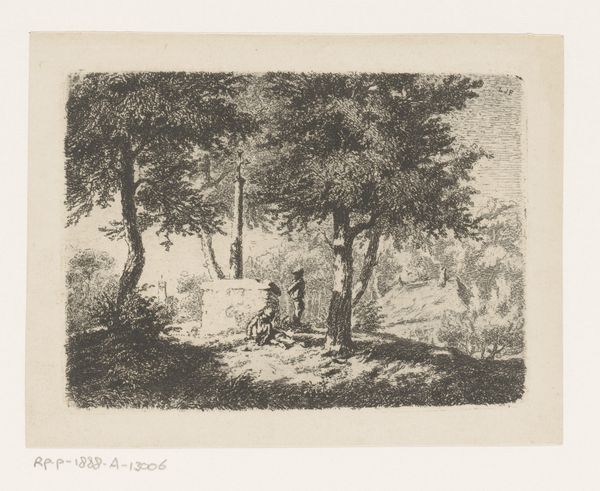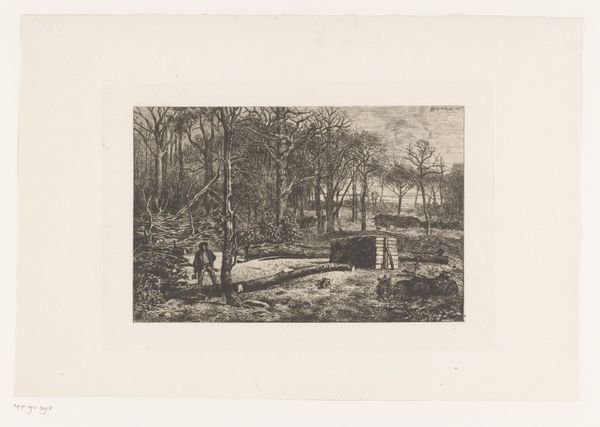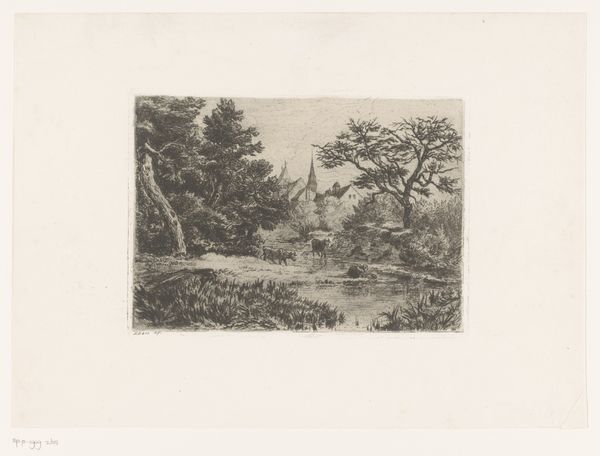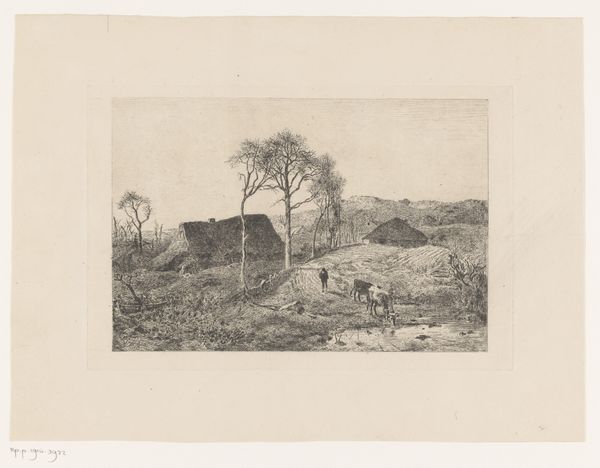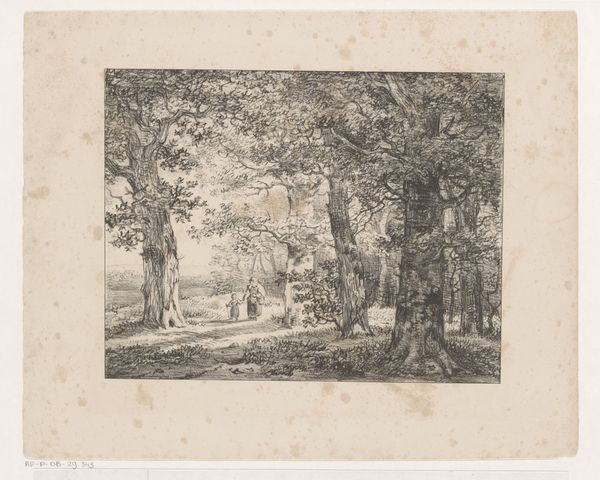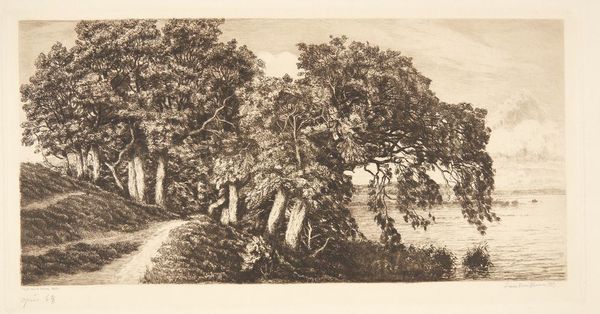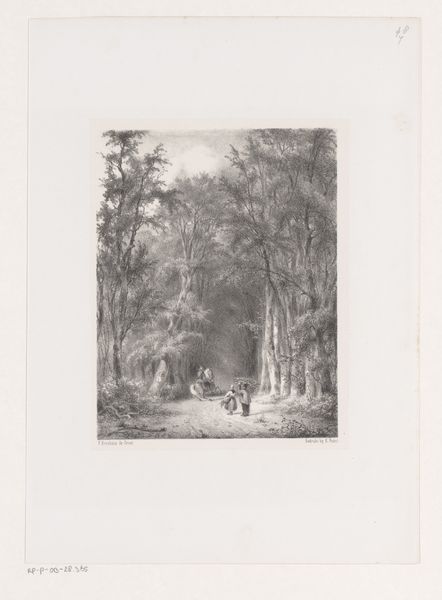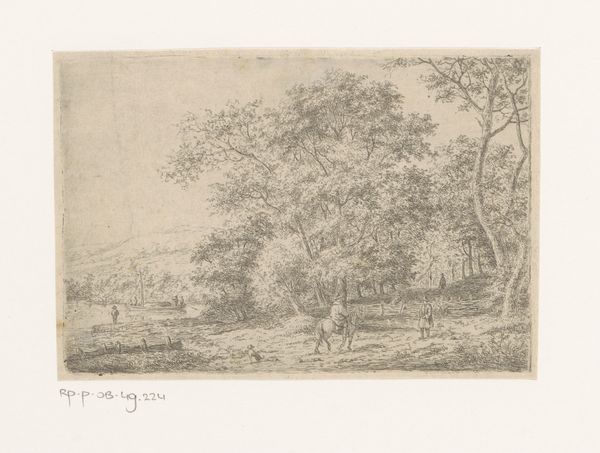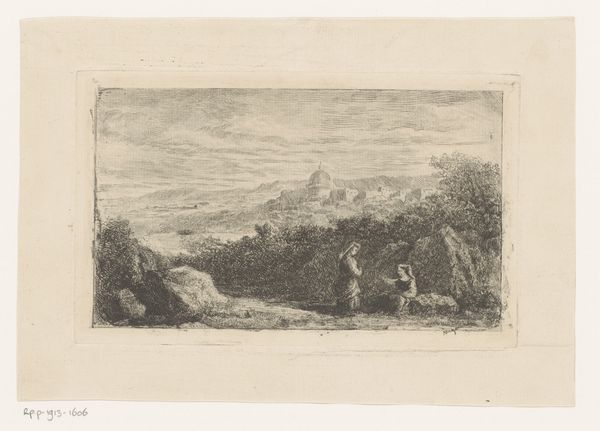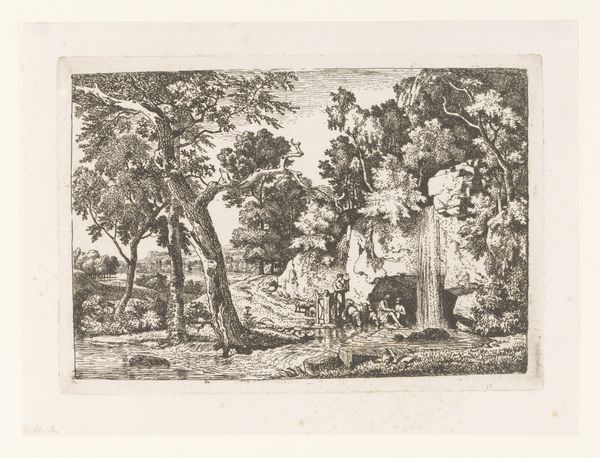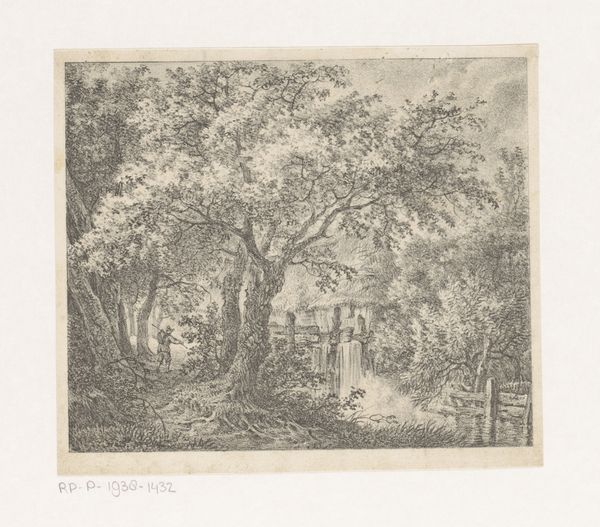
Vrouw knielt aan de waterkant om te wassen, op de achtergrond een boerderij 1830 - 1910
0:00
0:00
Dimensions: height 187 mm, width 247 mm
Copyright: Rijks Museum: Open Domain
Curator: This delicate etching, "Vrouw knielt aan de waterkant om te wassen, op de achtergrond een boerderij," was created sometime between 1830 and 1910 by Lambert Jacquelart. What strikes you first about it? Editor: The sheer labor! Just looking at it, I imagine the work involved in making both the scene itself—the woman kneeling at the river’s edge—and the etching that captured it. Curator: Exactly. There's an intersectional aspect to unpack. This work speaks to gendered labor and class. Notice how the artist chooses to depict a woman engaged in this activity? What does this say about women’s roles and visibility in the 19th century? Editor: The choice of subject reveals something too about Jacquelart’s own engagement with labor—the painstaking process of etching, the specific tools involved, the social act of printing... Curator: Consider that too through a feminist lens: How is labor valued in society when performed by a woman, versus an artist? Editor: And who consumes this print? A different class altogether, admiring an idyllic representation of rural life. What were the printmaking processes during this era? And what materials were readily available, what type of paper and inks were employed? Curator: The very act of making this etching mirrors, in a way, the labor represented within it. I think the composition draws on Romantic traditions. The river isn’t just a setting, it almost symbolizes both purification, through baptism and cleanliness. And renewal of the body, in a symbolic cycle. Editor: Yes! How interesting to see water used, quite literally here, as both commodity and a means to a material end. I mean without access to such basics and a safe location, this form of daily labor couldn't take place, even a simple wash became an exercise. Curator: This etching highlights those layers; a window into a woman’s lived reality shaped by economic constraints, expressed by a male artist and mediated through the materials he used to render her toil. It forces us to ask whose stories are told, how, and for whom? Editor: Seeing art this way encourages us to investigate how materiality mediates meaning and acknowledge that seemingly simple genre scenes like this carry weighty socioeconomic narratives and it all takes skill, the subject doesn't represent ease for many and labor behind the skill takes practice.
Comments
No comments
Be the first to comment and join the conversation on the ultimate creative platform.
